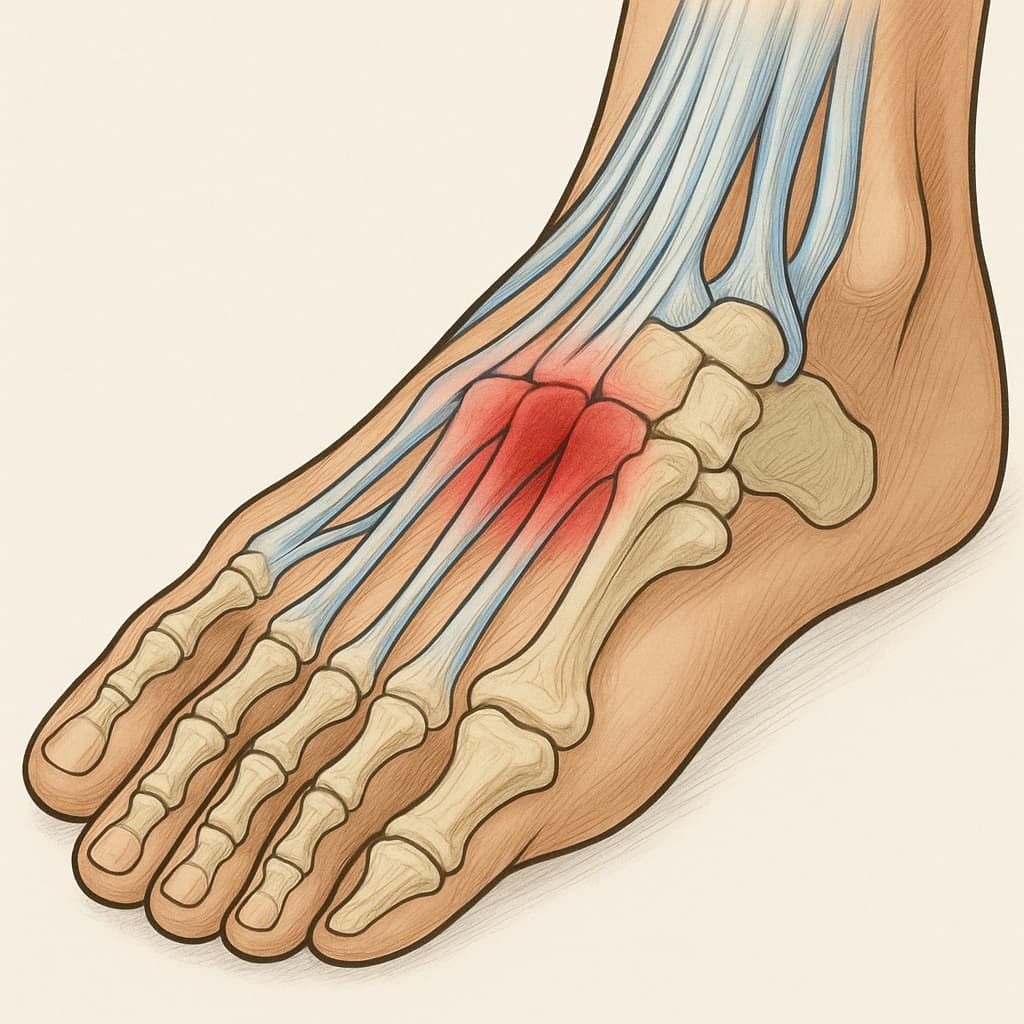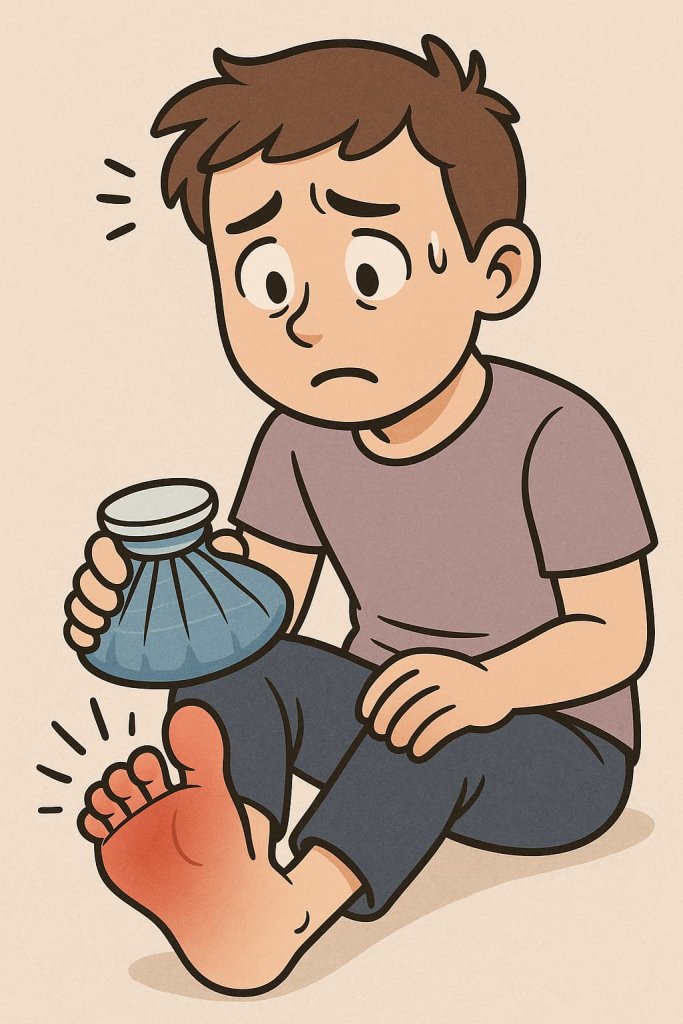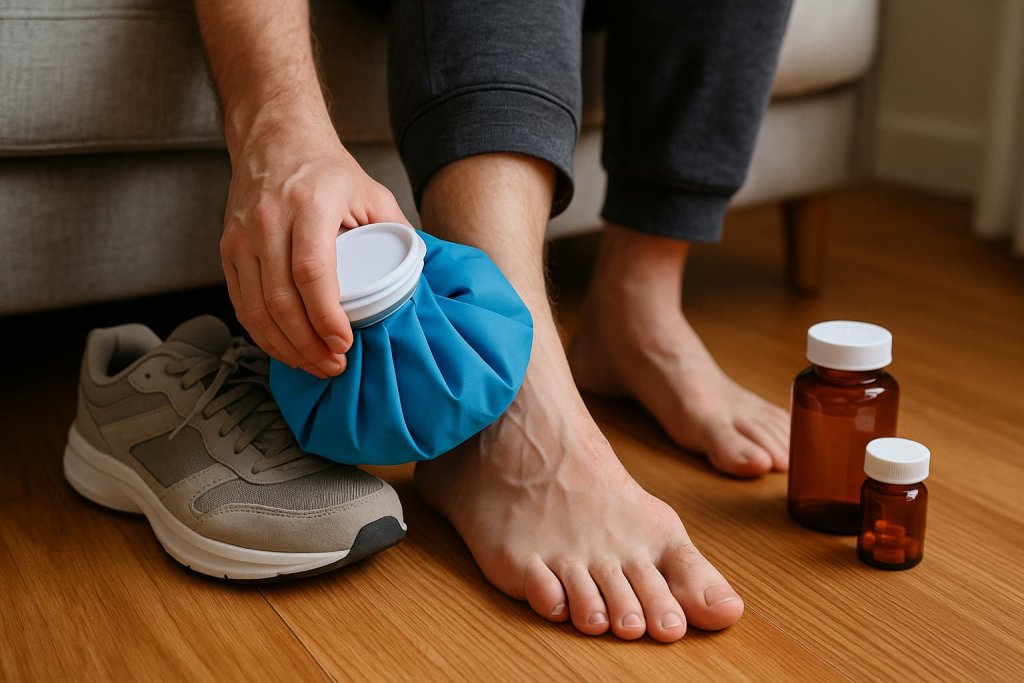Pain on top of the foot when walking is commonly caused by overuse, tendon inflammation, nerve compression, stress fractures, or poor footwear. Early attention can help you recover quickly and prevent ongoing problems. In most cases, self-care and proper footwear make a big difference, but persistent pain requires professional assessment.

If you have pain on the top of your foot while walking, understanding the causes and what steps to take is essential. This guide breaks down the main reasons, what to do, and how to prevent future foot pain—always consulting a doctor for diagnosis and treatment when needed.
What Causes Pain on Top of Foot When Walking?
Pain can develop suddenly or over time. Here are the most common causes according to podiatry and health experts.
Extensor Tendonitis
What it is: Inflammation of the tendons along the top of the foot—often due to repetitive walking, running, or shoes that fit too tightly.
- Triggers: Increased walking or activity, tight shoes or laces, frequent stair climbing or hill walking
- Symptoms: Aching or sharp pain when lifting your toes, tenderness on the top of the foot, mild swelling
Expert source: Healthline – Pain on Top of the Foot (2024)
Stress Fractures
What it is: Small cracks in the bones (usually the metatarsals) from repeated stress.
- Risk factors: Sudden increase in steps or intensity, hard surfaces or worn-out shoes, low bone density
- Symptoms: Pinpoint pain and swelling that worsens with walking, persistent tenderness, possible mild bruising
Expert source: Medical News Today – Stress Fractures
Nerve Compression & Neuropathy
What it is: Compression or irritation of nerves, causing tingling, burning, or numbness.
- Common causes: Tight shoes across the top, high arches or foot structure issues, underlying health conditions (like diabetes)
- Symptoms: Numbness, burning, or electric pain, worse at night or after standing
Expert source: Verywell Health – Nerve Problems in Foot
Gout or Arthritis
What it is: Inflammatory joint conditions that can cause pain and swelling on the top of the foot, especially in the big toe joint.
- Symptoms: Sudden intense pain, warmth, redness, and swelling; may flare up after certain foods or dehydration
Expert source: Arthritis Foundation – Gout Symptoms
Other Causes
- Bone spurs, ganglion cysts: Lumps or bony growths pressing on tendons or nerves (Mayo Clinic – Ganglion Cyst)
- Foot structure issues: High arches, flat feet, or biomechanics (American Orthopaedic Foot & Ankle Society)
- Recent injuries: Bruises or trauma
Symptoms: When to See a Doctor

Pay attention to these warning signs:
- Pain lasting more than 5–7 days
- Pain that worsens with walking
- Swelling, redness, or visible lumps
- Numbness, tingling, or burning
- Trouble bearing weight or limping
Red flags: Seek immediate medical attention for severe swelling, sudden inability to walk, fever, or persistent numbness.
Reference: NHS – Foot Pain
Diagnosis: How Professionals Identify the Cause
A proper diagnosis is the fastest way to relief. Your healthcare provider may:
- Review your medical history and symptoms
- Perform a physical exam: Checking movement, swelling, and tender spots
- Order imaging: X-rays for bones, MRI for soft tissue or subtle fractures, ultrasound for cysts
- Request blood tests: For gout or arthritis if indicated
- Recommend nerve studies: If neuropathy is suspected
Authoritative resource: American Academy of Orthopaedic Surgeons – Foot Pain
Treatment: What Should You Do?

Never self-prescribe medications. Always consult your doctor for diagnosis and personalized treatment.
Home Care
- Rest: Avoid long walks or impact activities that aggravate pain
- Ice: Apply for 15–20 minutes, a few times daily to reduce swelling
- Elevation: Raise your foot above heart level when resting
- Change footwear: Wear cushioned, supportive shoes with a wide toe box; avoid tight laces
- Activity modification: Switch to low-impact activities like cycling or swimming if walking is too painful
When to Seek Medical Help
- If pain does not improve after a week of self-care
- If pain worsens or you cannot bear weight on the foot
- If swelling or numbness increases
Professional Care
Your doctor may recommend:
- Physical therapy: Targeted stretching and strengthening
- Custom orthotics: Shoe inserts for support if you have high arches, flat feet, or specific biomechanics
- Specialized treatment: For underlying conditions such as gout, arthritis, or nerve issues
For any persistent or severe pain, consult your podiatrist, orthopedist, or healthcare provider for safe and effective care.
Expert advice: Cleveland Clinic – Foot Tendonitis
Prevention: How to Avoid Future Pain
- Choose supportive footwear: Wide toe box, cushioning, and good arch support (NHS – Shoe Fit)
- Increase activity gradually: Only add 10% more steps or distance per week
- Warm up and stretch: Especially calves, Achilles, and foot tendons before activity (Mayo Clinic – Plantar Fasciitis Stretches)
- Rotate your shoes: Replace them regularly and alternate pairs
- Maintain a healthy weight: Reduces pressure on foot joints (Healthline – How Weight Affects Your Feet)
- Manage medical conditions: Follow your doctor’s advice for gout, diabetes, or arthritis
Frequently Asked Questions (FAQ)
How long should I wait before seeing a doctor?
If pain hasn’t improved after 7–10 days of rest and care, or if you have severe symptoms, consult a healthcare provider.
Is it safe to keep walking if I have pain?
Stop or reduce activity if pain increases. Consult a specialist before resuming normal walking.
Can top-of-foot pain go away on its own?
Some mild cases resolve with self-care, but persistent or severe pain needs a professional assessment.
Should I use ice or heat?
Ice is usually recommended for the first 48–72 hours for swelling. For ongoing pain, ask your doctor what’s best for your condition.
What if I have diabetes or nerve problems?
See a doctor promptly. Foot problems can escalate quickly in people with diabetes or neuropathy.
Conclusion: Protect Your Feet with Expert Care
Pain on top of the foot when walking is treatable in most cases with early attention and supportive footwear, but don’t ignore persistent or severe pain. If symptoms last more than a week, worsen, or include swelling or numbness, consult a doctor or foot specialist. Fast, professional care can prevent long-term issues and keep you moving comfortably.
